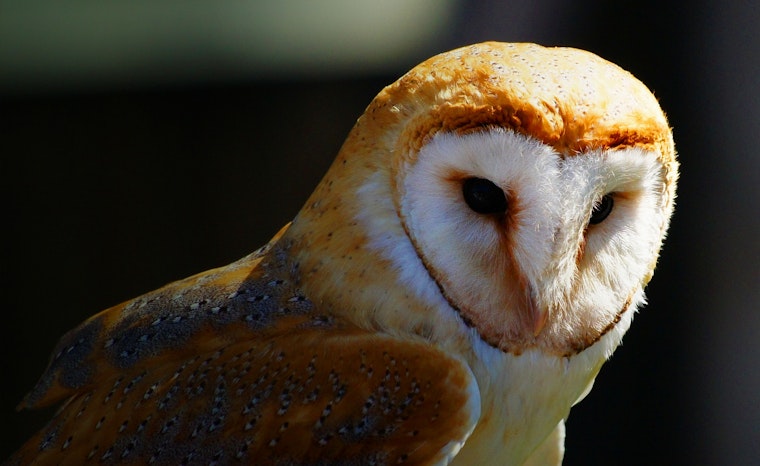Autumn Rewilding – Beavers, Scrapes and Raptors at Work
Autumn rewilding in action: Chris Packham and the team build beaver habitats, bird scrapes and raptor perches to boost British biodiversity.

As Ecotalk’s Chief Ecologist, Chris Packham has spent his first three months getting his boots firmly muddy. Across the sites, the team are repairing, restoring and rewilding for UK wildlife. From ditches dug and ponds installed to fences raised and trees carefully felled, every step is part of a wider effort to let nature take the lead. It’s made possible thanks to the Green Britain Foundation and thousands of Ecotalkers, who help us make a difference simply by choosing the best mobile network.
At Bowyers Wood, the team has been especially busy. This site in the south of England is becoming a showcase for practical, science-led rewilding. The sound of machinery, shovels and birdsong fills the air as the team prepares for one very special arrival - beavers.

Building a Home for Beavers
“It’s been two years of planning, licensing and preparation,” says Land Manager, Chris Perkins, “but at long last we’re putting up the beaver fence.”
Unlike typical stock or deer fencing, this enclosure is designed with precision. The mesh comes right down to the ground and includes a buried wire skirt that prevents the beavers from digging out. “If they try to burrow under,” Perkins explains, “they’ll hit the skirt and stop. It’s all built to Natural England’s specifications.”
The finished enclosure will stretch for around a kilometre and enclose roughly 20 acres of woodland and stream. That waterway is key; beavers are ecosystem engineers and cannot thrive without it. Once they move in, they will shape their surroundings; felling trees for food, damming channels and forming new ponds. Each pool creates fresh habitat for dragonflies, water beetles, frogs and newts, which in turn attract reptiles and birds.
Crafting a Future for Barn Owls
Rewilding isn’t just about mammals. Birds of prey play a vital role in a balanced ecosystem, and at Bowyers Wood, we’re also thinking vertically. That’s why Chris invited Jimmy Hill, founder of Raptor Aid, to help install a new barn owl box.
“Jimmy is one of the UK’s leading raptor conservationists,” says Chris. “We only work with the best!” Together, they hoisted a purpose-built A-frame box into an oak overlooking the roughening grassland below.
These boxes are carefully designed to give barn owls the space and structure they need to thrive. Inside, there’s enough floor area for a brood of up to seven chicks, a deep drop to stop them toppling out too early, and a perch for adults to rest and feed their young. Chris adds a layer of soil from a molehill to line the base. “It’s a simple trick that makes a difference,” Jimmy explains. “Owls don’t build nests, so this gives them a head start when they move in.”
Maintenance matters too. “Barn owls are a Schedule 1 species,” Jimmy reminds us. “They’re legally protected during breeding, so any monitoring has to be licensed. But outside the season, boxes need checking — squirrels and jackdaws can fill them with leaves in months.”
For anyone with a garden that backs onto open countryside, installing a nest box is an easy way to support wildlife. “Four out of five breeding barn owls in the UK now use boxes,” Jimmy says. “That’s conservation success in action.”
Soft Edges and Natural Boundaries
While the new enclosures and boxes take shape, smaller interventions are just as important. Chris and the team have been working on “soft edging” - cutting back selected trees and allowing scrub to creep into the meadow.
“Nature doesn’t work in straight lines,” Chris explains. “We’re blending the woodland edge into the field, creating a rougher transition where birds can nest and young trees can grow.”
Some of the felled willows are left where they fall, forming natural cages that keep deer at bay while bramble and wildflowers re-establish themselves. It’s a light touch approach, letting natural processes guide recovery, rather than imposing order.
Cameras, Clues and New Visitors
Monitoring is central to understanding what’s working. Conservation Engagement Officer, Grace, has been leading the camera-trapping project at Bowyers Wood. With motion-sensitive cameras placed across the site, the team can quietly watch how wildlife responds without any disturbance.
The early results are promising. “We’ve seen fallow and roe deer, a badger, a fox, and even a curious robin,” says Grace.
For Chris, the camera traps are about more than footage. “They show that life is returning. Every track, every flash of fur or feather tells us that our work is paying off.”
Restoring Nature, One Site at a Time
Bowyers Wood embodies practical conservation that works with nature, not against it. From the beaver fence to the barn owl box, from soft edging to camera monitoring, every action is designed to give wildlife the space and safety it needs to thrive.
The team are not just managing land. They're helping it heal. The beavers, the owls, the insects, the plants - they’re the ones doing the real work. We just give them a head start.
By choosing Ecotalk, our customers help us turn more of Britain’s land into living, breathing habitats. Together, we can power a wilder future for the UK.